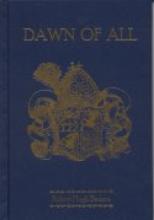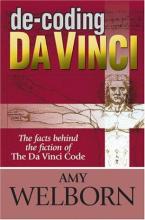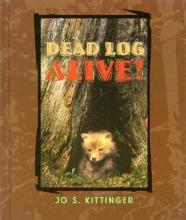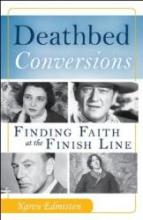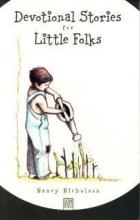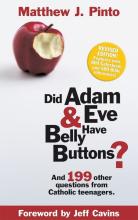No name
Dawn of All
Msgr. Benson wrote the book, he comments in a preface, as a response to readers of Lord of the World who felt he painted too bleak a picture of a future where Christianity was marginalized and all but extinguished by the forces of Modernism. This book takes the opposite premise as a starting point - that the truth of Catholic claims have been almost universally recognized except by a few stubborn Socialists.
A dying priest of the turn of the century, who has lost his faith to the modern conceptual framework of science and psychology, slips into a coma and find himself, with no memory of his past, in a future world which seems strange and unsettling to his Modernist sensibilities. The science and psychology communities studying miracles under the authority of religion at Lourdes? An Ireland which has become basically a country-wide contemplative order? Learned men telling him pityingly that it is only the half-educated mind which can compartmentalize faith and reason rather than realizing they are both tools for the search for Truth? The USA government a monarchy, with Massachusetts a haven for a last remnant of earnest, earthbound Socialism?
The searching, intellectual, slightly distanced tone of these observations suits the character of the protagonist-priest. With his intellect, he sees the force of the Catholic claims; but his heart continues to resist. A crisis comes when he witnesses the trial and execution of a pure-minded but self-confessed heretic priest under the secular authority. How can this be right? Can this ascendant Church, whose supremacy is acknowledged world-wide, be truly the Church of its suffering servant Founder? In a world where societies punish heresy as a crime, and "freethinkers" are sent to exile, how can church leaders claim to be allied with He who is meek and humble of heart? The church has shown herself to have the Truth, but does she have a heart?
Monsignor Benson uses this projected future society to explore some of the criticisms of our past, historical Church and offer some perspective on the paradox of a Holy Church whose earthly work is carried out by weak, fallen man. I don't think it is any coincidence that the dying priest has lost his faith while co-writing a book about the popes. When a ferocious German socialist party, willing to annihilate the world rather than concede defeat, threatens Europe and kills Catholic envoys, it is a pope who show how meekness and courage can be reconciled with authority in one person, the person of Christ's Vicar.
Reading this book, the Catholic reader must examine his assumptions and think about profound topics. Though the reading and interest level is suitable for a ninth grader, I think the novel should be read under supervision, with some care to explain to the student the genre and intentions of the book. I think it would be more profitably read along with the companion novel Lord of the World and possibly as a starting point to a study of various ideologies and how they affect the day to day details of society.
de-coding Da Vinci
The 2003 release of the novel The Da Vinci Code created one of the largest literary crazes in recent history. With sales of almost 6 million in its first year, the novel gained a cult-like following. Author Dan Brown's ability to blend fact and fiction left many readers questioning what they really knew of the origins of Christianity. News is now out that we can expect to see the story in theaters in about a year. Certainly viewers will come away with many of the same questions readers had as to how much, if any, of the story line is factual, and how much is fiction.
Fortunately for those who want to sort out the facts, Amy Welborn has written decoding Da Vinci: the Facts Behind the Fiction of the Da Vinci Code. Welborn covers everything from the marketing of the book to the sources of information presented, and ultimately reveals a "startling number of blatant, glaring errors on matter great and small that should send up red flags to anyone reading the novel as a source of facts, rather than just pure fiction" (decoding Da Vinci p. 10). She also helps explain why this confusion over fact versus fiction is occurring when she states:
Historical fiction is a very popular genre, but in writing historical fiction, the author makes an implicit deal with the reader. He ... promises that while the novel concerns fictional characters engaged in imagined activities, the basic historical framework is correct. [Readers] trust the author is telling the truth about history. In The Da Vinci Code, imaginative detail and false historical assertions are presented as facts and the fruit of serious historical research, which they simply are not. (p. 21 italics added)decoding Da Vinci is handily divided into a preface, a section entitled "How to Use this Book", an introduction which provides a plot synopsis, ten chapters (each addressing one key issue of the book), and an epilogue. The plot synopsis is thorough enough that you need not have read the novel to make use of this book. Each chapter also ends with further reading suggestions and questions for review and discussion. Readers can thus study particular issues in more depth on their own, or even use the material for a group study. The book is a quick read from cover to cover, but also organized so that each chapter stands on its own for easy reference.
Throughout her book, Welborn uses a tone readers will be familiar with from her Prove It series and other writings. Straightforward and to-the-point, she is never condescending or preachy. The book thus becomes a powerful tool to help counter the myths Brown has presented in his original work.
The up-coming movie release makes this book an important and timely choice for adults and older teens to read.
Dead Log Alive!
This book provides an interesting and detailed look at what comes to live in and around a dead log – woodpeckers, squirrels, mushrooms, fungi, moss, molds, porcupines, foxes, snakes, scorpions, millipedes, centipedes, pill bugs, salamanders, ants, termites, and beetles. Includes many interesting color photos and details about each species, how to tell them apart and much more. The book also includes an index, a glossary and suggestions for further reading.
Deathbed Conversions
Declaration Statesmanship
Since the last review of this work, the name has changed, and it now comes with a teacher's manual and book of readings. It was formerly called America's Declaration Principles in Thought and Action. The main text has not changed, but is now printed in an attractive 8 X 11 comb-bound book.
Original Review:
The stated purpose of America's Declaration Principles in Thought and Action, a text for use by high school students, is to, " . . . help the young citizens of America to understand how the principles of the American founding are crucial to the pursuit of happiness which is their birthright." The text follows the thought and development of the Declaration as the founding document of our country and then traces its spirit through two centuries of application in the political life of the country. The book is only nine chapters and 154 pages, but it is packed full of extension ideas, suggestions for further reading and thoughtful reflections that would easily fill a year's civics course.
The format of the book is very straightforward and the text quite readable, even enjoyable. What makes this book exceptional in the world of high school history publishing are the suggestions for further reading, questions for reflection and possible extra study or writing assignments given in each chapter, sometimes several times in a chapter. ALL of these suggestions are at higher levels of thinking which require the student to reflect, analyze, compare, critique and draw conclusions. This is truly a text to challenge and refine thinking skills while studying an essential topic in today's world.
Here is an example of a question from the "for reflection and research" section of Chapter 5 (which examines the Declaration in detail): "In a certain way, it was easier for the founders to see that they were serving in a high cause, an honorable one, in the revolution, than it is for us to see that we are doing something similar in performing our civic duty today. More seems to be demanded of a man to stand up to a line of British Grenadiers that to decide rightly on a school bond issue, or to obey the zoning laws of his county. What else might lead us to deny the honorable character of public service in our time? What can be said in defense of it? Lincoln will consider, in a famous speech he gave as a young man, in 1838, the different challenges facing the founding generation and a generation whose task is to preserve the Republic. What do you think are the threats to liberty today, and what virtues and knowledge are necessary to defeat them?"
I quite honestly have never seen anything like this.
In addition, at the end of each chapter is an outline of the chapter which would be a great study aid for review or help students organize their basic comprehension of the material.
So what about the content? The authors assert that the Declaration, as the founding document of the country, is the "spirit of the law" beneath the "letter of the law," the Constitution. So we should read/interpret the Constitution in the light of the Declaration. To do this we must understand the Declaration first. So that is where the book begins. Chapter One makes the argument that our country began, not with the end of the war, not with the Constitution, but with the Declaration. So its first principles are the first principles of our country. Chapter Two describes some of the history of political thought which led the colonists to believe that they had a right to rule themselves. Chapter Three is the Declaration itself. Chapter 4, entitled "The roots of American Liberty," discusses the sources of the idea of democracy throughout history. Sources quoted include ancient philosophers, such as Aristotle and Cicero, more modern philosophers, such as John Locke, several colonial period clergymen and a Catholic saint.
Chapter 5 examines the Declaration in detail and contains some excellent suggestions for thinking and research. Chapter 6, divided into two parts, examines the Articles of Confederation and the Constitution. Direct correlation is made between the complaints listed in the Declaration and the wording of the Constitution. Chapter 7 picks up the subject of slavery as the great stain on the American experiment and as a test of the founding principles of our country. By the standard of the Declaration, we - the courts, the courts, the Congress, and, according to the authors, the policy of the founders - failed.
Chapter 8 begins a treatment of the kind of statesmanship that a true adherence to the Declaration would produce. It begins with Lincoln. This chapter is the most lengthy and the most challenging of the book. It traces the history of the pre-Civil War era and then the effects of reconstruction in the South leading up to the civil right efforts in the Sixties. Chapter 9, in the authors' own words, " . . . investigate(s) the characteristics that have made our country the most successful democracy in history." The authors explore Alexis deTocqueville's writings and offer modern day commentary on what he reported. In the section on education, the authors claim, " To act well, to achieve good, a good hearted American student needs to understand the principles that have made his country." This seems very basic and is perhaps one objective of every American history course in every school in the country. This book, however, gives the student the chance of truly doing that.
The text and assignments are challenging. This is not the kind of book you could just hand to a 16 year old and say, "go to your room and do this." Most students will need guidance to select the extra activities and help to find the suggested readings. It also begs discussion, and the best situation, perhaps, would be to have a group of home schooling students come together to discuss it. Some of the chapter questions require knowledge of the history of the United States, so it would be good to do this course after or coinciding with a history course. To make a more involved course, a student could research the historical part as he goes along.
The correlation of the primary source readings makes this program unique and fills a great need in home schooling curriculum.
More Updates to the Original Review:
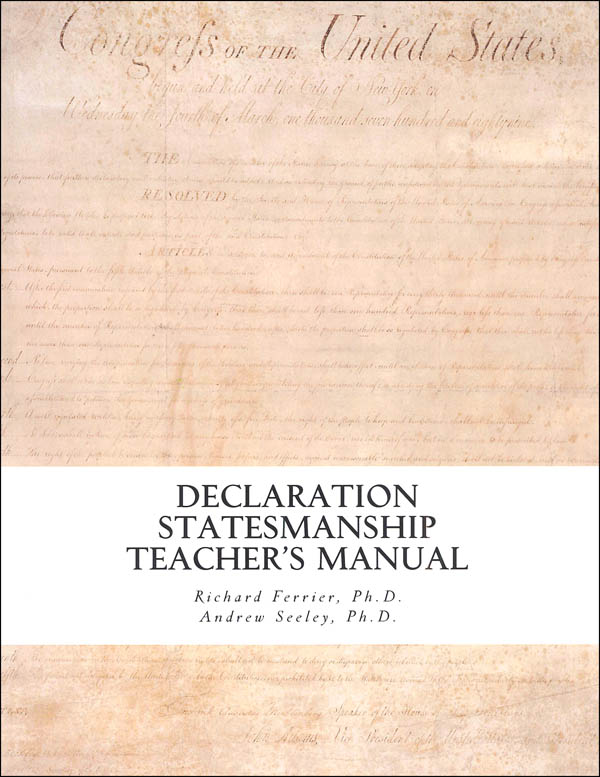 The Teacher's Manual is 68 pages and divided in four parts: lessons plans for a 14 week semester course; answer keys to the review questions in the Course the book of readings; ready-made quizzes and tests (with their answers); and teaching strategies. This helps tremendously in seeing the view of the course that the authors intend. The teaching strategies section is especially helpful. In it, the authors explain their purpose and goal for each chapter and give more background information and teaching tips for the teacher.
The Teacher's Manual is 68 pages and divided in four parts: lessons plans for a 14 week semester course; answer keys to the review questions in the Course the book of readings; ready-made quizzes and tests (with their answers); and teaching strategies. This helps tremendously in seeing the view of the course that the authors intend. The teaching strategies section is especially helpful. In it, the authors explain their purpose and goal for each chapter and give more background information and teaching tips for the teacher.
 The Readings book is a 127 page collection of primary works that the student reads as part of the course. The authors have also thoughtfully included comprehension and discussion questions for each reading. Not all the readings required for the course are published in this volume, but most of the American sources are. For all other works needed, (mostly the ancient sources), the authors have listed web pages where they may be found. When I first reviewed this course, I thought that even though it was excellent, the finding of all these primary sources would be daunting for a homeschool family. This book of readings solves that problem!
The Readings book is a 127 page collection of primary works that the student reads as part of the course. The authors have also thoughtfully included comprehension and discussion questions for each reading. Not all the readings required for the course are published in this volume, but most of the American sources are. For all other works needed, (mostly the ancient sources), the authors have listed web pages where they may be found. When I first reviewed this course, I thought that even though it was excellent, the finding of all these primary sources would be daunting for a homeschool family. This book of readings solves that problem!
After reading this course a second time, I remain convinced that there is nothing like it!
Recommended for a semester Civics course for 11th or 12th grade.
The authors of this text are both tutors/professors at Thomas Aquinas College.
This book was donated for review by Drs. Ferrier and Seeley.
Text (154 pages), Teacher's Manual (68 pages) and Book of Readings (127 pages), available in softcover or pdf.
Designing your Own Classical Curriculum
DYOCC is quite a bit different from the other books on Catholic Homeschooling. Instead of simply discussing homeschooling, as the other books do, Mrs. Berquist outlines an entire homeschool curriculum you can use with your children or adjust to your liking. She includes suggestions for putting together your own curriculum and a grade by grade outline which includes recommended texts, sample weekly schedules, a number of study guides, lists of important dates and people, poetry suggestions and extensive lists of appropriate literature and history stories. I found her introduction very helpful in fine-tuning my educational goals for my children. Even parents who are happily using another curriculum will find this book a very valuable source of supplemental resources and tips for making homeschooling more interesting and more successful. Some homeschoolers consider her to be much stronger in the history, literature and religion areas and a little weaker on Science and Math. To learn more about the classical liberal arts curriculum as described in her book, you can also read Dorothy Sayers' "The Lost Tools of Learning."
Devotional Stories for Little Folks
Nancy Nicholson (author of numerous titles from Catholic Heritage Curricula including the My Catholic Speller and Language of God for Little Folks series) hits another homerun with this new title. Thirty-six stories centering around family life offer humor, entertainment and gentle lessons in morality. The stories are perfect for reading aloud during breakfast or lunch. Each story includes related quotes from the Bible or the Catechism of the Catholic Church, vocabulary words and questions for discussion. My children have taken great delight in listening to and "figuring out" these charming stories.
Dictionary of Ecclesiastical Latin
All Latin students will benefit from ready access to a Latin dictionary, but Catholic Latin students using a Catholic textbook, or reading from Church documents and the Vulgate Bible in their original Latin, will especially benefit from access to a Catholic Latin dictionary. The Dictionary of Ecclesiastical Latin has been written to help both seminary students and laypeople as they advance beyond their introductory Latin studies. The hardback binding, clear typeface, and non-shiny paper combine to make this book a pleasure to use. The more than 17,000 entries have been drawn from Sacred Scripture, the Codes of Canon Law of both 1918 and 1983, the liturgy, the documents of Vatican II, and the 1990 Code of Canons of the Eastern Churches. By providing the most common English definitions of Latin words and phrases as they are used by the Church, this wonderful reference book will be turned to again and again.
Did Adam and Eve have Belly Buttons?
Not just a catchy title, "Did Adam & Eve have Belly Buttons?" is an actual question posed by an eighteen-year-old boy. In fact, the whole book is organized around questions from teenagers about the faith. To make it easier to follow, the author has grouped them into twelve categories: God, Creation and Man, Religion and the Bible, Jesus Christ, Catholic Morality, etc.
Because of the layout of the book, the reader can either work his or her way through the book from front to back, or pick and choose topics of interest to him or her. For quick reference to find a particular question, there is also a topic/question index at the back of the book. With a total of 200 hundred questions, there are plenty to choose from! The revised edition includes over 800 Catechism and 500 Bible references to the same questions as in the original edition. At the end of the book, in addition to the index of questions, there is also a guide to confession, an examination of conscience, a list of resources, and a bibliography.
Some questions might be found in a Catechism, such as "What is hell?" Many, however, because they are posed by modern teenagers, are anything-but-typical... such as "Is it okay for Catholics to listen to non-Christian music?" In a way, the book is written by teenagers, and therefore should appeal to them. Although the answers are written in an easy to understand language, they are not watered down or silly, but serious, solid, and thought provoking.
Because of the nature of some of the questions concerning sex (there are just a small handful) I would not hand this book over to just any teen (remembering that these can range from 13 to 19 year olds). Since circumstances vary from family to family, the parents should take into account the maturity of the child, how they spend their time, and what kind of school or work they attend. Straightforward, honest and Catholic, the answers do not in any way arouse sexual curiosity. For example, in answer to a question about premarital sex, the author lists seventeen reasons to save sex for marriage.
Most of the questions in the book even a pre-teen could benefit from, such as "What is the difference between Catholic and Christian?"
While a young person may not pick up the Catechism of the Catholic Church voluntarily, he or she might be intrigued by the catchy title and want to read more and in the process enrich their faith.
Update from webmaster, March 2024: A revised edition came out in 2013, and the book details here are from that edition.

